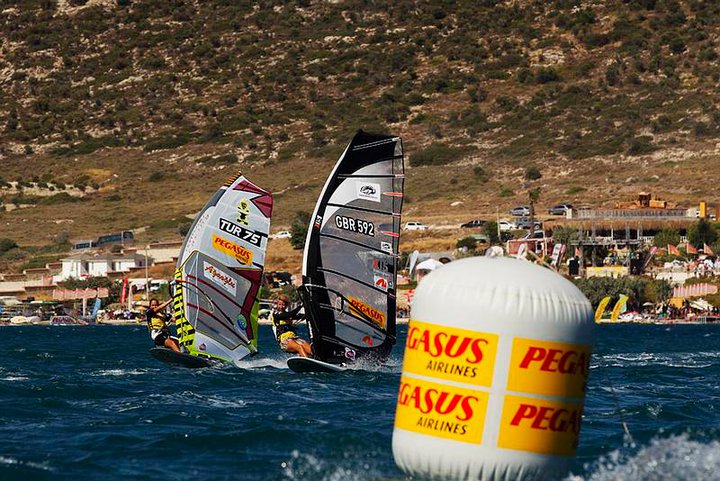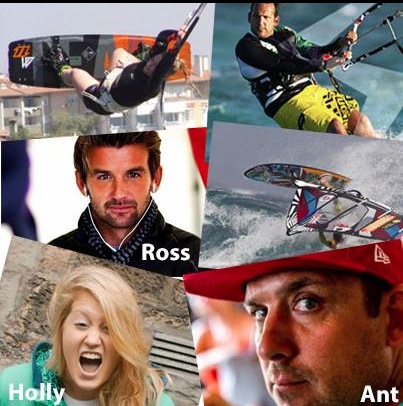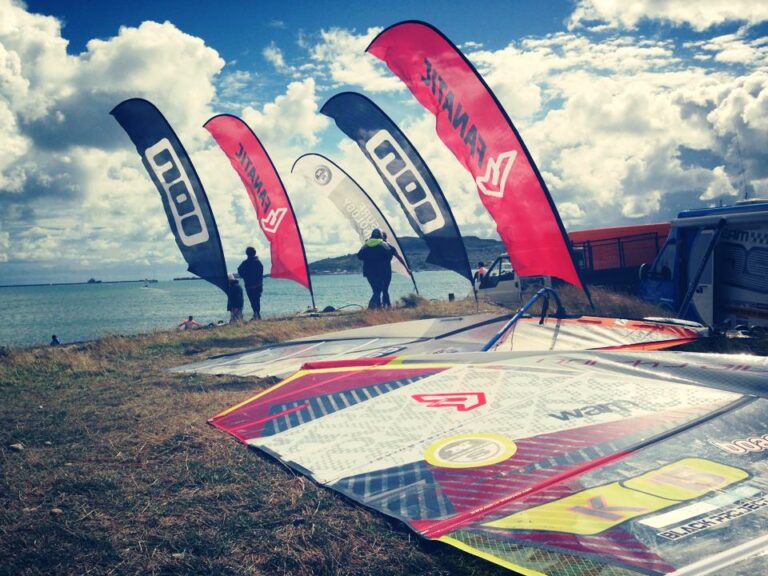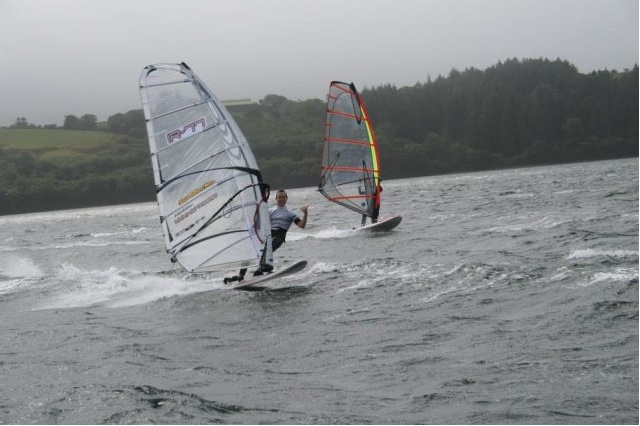What goes on tour stays on tour? Well, not in this case, as BOARDS asks some the PWA’s finest to spill the beans on what techniques are required – and what goes through their minds – while negotiating their way around the slalom course.
Whilst you’re watching the latest action from PWA Alacati on our sister site Boardseeker, it’s the perfect time to read this slalom technique piece which was initially printed in the Spring Summer 2013 Boards magazine.
Here in part one we’re covering: preparing, starting and gybing…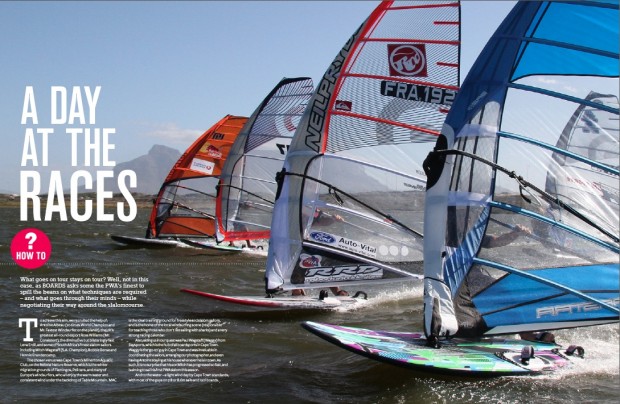 We have recruited the help of: Antoine Albeau (20 times World Champion and Mr. Fastest Windsurfer on the planet), the UK’s greatest all-round export Ross Williams (Mr. Consistent), the diminutive but blisteringly fast Lena Erdil, and some of South Africa’s finest slalom sailors including Mitch Wagstaff (S.A. Champion), Robbie Bense and Hennie Brandencamp. The chosen venue was Cape Town’s Milnerton Aquatic Club, on the Reitvlei Nature Reserve, which is the winter migration grounds of Flamingos, Pelicans, and many of Europe’s windsurfers, who all enjoy the warm water and consistent wind under the backdrop of Table Mountain. MAC is the ideal training ground for freestyle and slalom sailors, and is the home of the local windsurfing scene (responsible for teaching those who don’t like sailing with sharks) and a very strong racing calendar.
We have recruited the help of: Antoine Albeau (20 times World Champion and Mr. Fastest Windsurfer on the planet), the UK’s greatest all-round export Ross Williams (Mr. Consistent), the diminutive but blisteringly fast Lena Erdil, and some of South Africa’s finest slalom sailors including Mitch Wagstaff (S.A. Champion), Robbie Bense and Hennie Brandencamp. The chosen venue was Cape Town’s Milnerton Aquatic Club, on the Reitvlei Nature Reserve, which is the winter migration grounds of Flamingos, Pelicans, and many of Europe’s windsurfers, who all enjoy the warm water and consistent wind under the backdrop of Table Mountain. MAC is the ideal training ground for freestyle and slalom sailors, and is the home of the local windsurfing scene (responsible for teaching those who don’t like sailing with sharks) and a very strong racing calendar.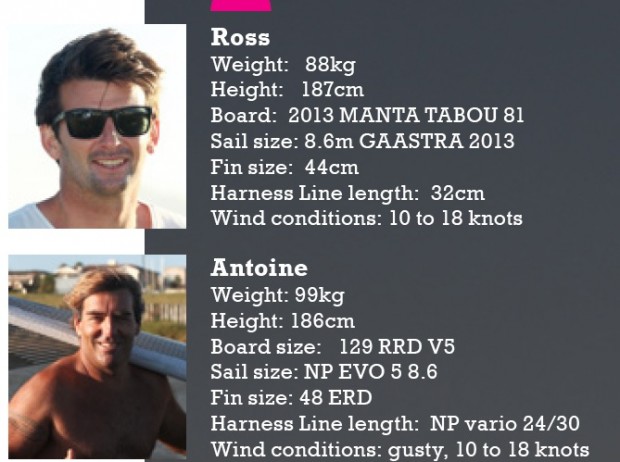
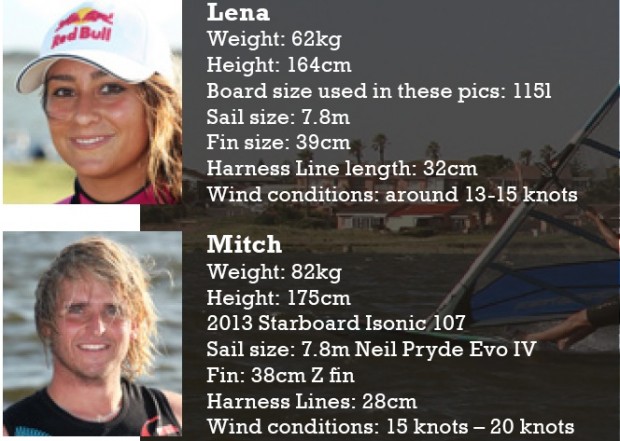
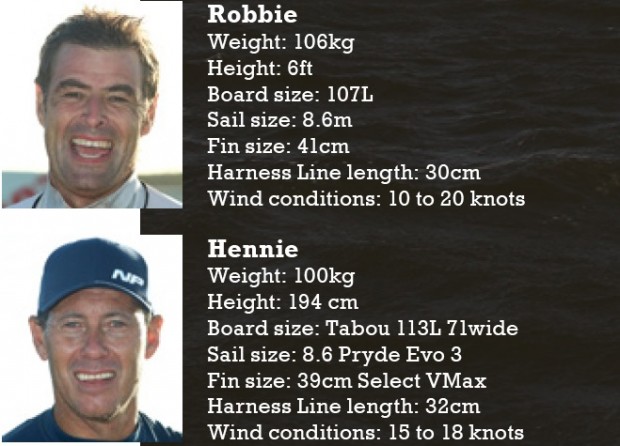 Also, aiding us in our quest was Paul Wagstaff (Waggy) from Baysports, which is the hub of all boardsports in Cape Town. Waggy is the ‘go-to’ guy in Cape Town and was invaluable in co-ordinating the sailors, arranging our photographer, and even having Antoine staying at his house whenever he is in town. As such, it is no surprise that his son Mitch has progressed so fast, and is aiming to sail his first PWA slalom this season. And to the water – a light wind day by Cape Town standards, with most of the guys on 7.8 or 8.6m sails and 120l boards.
Also, aiding us in our quest was Paul Wagstaff (Waggy) from Baysports, which is the hub of all boardsports in Cape Town. Waggy is the ‘go-to’ guy in Cape Town and was invaluable in co-ordinating the sailors, arranging our photographer, and even having Antoine staying at his house whenever he is in town. As such, it is no surprise that his son Mitch has progressed so fast, and is aiming to sail his first PWA slalom this season. And to the water – a light wind day by Cape Town standards, with most of the guys on 7.8 or 8.6m sails and 120l boards.
Fail to prepare – prepare to fail!
A day’s racing can be won or lost long before the green flag goes up, and apart from being physically and mentally prepared, knowing the course and testing the conditions is essential to calm those pre-race nerves.
Ross: “My plan before is to be out on the water early. I want to make sure I know the whole course well, knowing where I can gybe tight or open. Also, I want to check the start line and take a transit, so I can be on the line at go (and not over early), as well as knowing which end of the line is best to start at. I want to make sure I am relaxed and comfortable on my equipment, while keeping an eye on the wind to see whether I will need to change my setup at all.”
Antoine: “I will already have all my equipment prepared, but always like to go on the water beforehand to see how it feels. I will test a few combinations to check how it is going and decide what size sail and fin to use. Also, I always test the start to decide where the best position is, and then try the first reach or even sail the whole course. I will also try to visualise the start-line, and the fastest way to the first mark.”
Robbie: “I always do a few runs and try to do the entire course at least once before the race. I have a bad habit of leaving everything to the last minute and forgetting to adjust harness lines and boom height, so it’s a good idea to quit the chit chat and rev the engine a few times by sailing the course and getting everything perfect.”
Hennie: “Rig what you have got to the best of your ability. Don’t get caught up in the chatter about who just got what amazing board / sail / fin. The mid-level guys that overspend and then talk it up are making up for lack of sailing skill. Try to get out early to test the course and make sure you are powered up enough to plane all the way.”
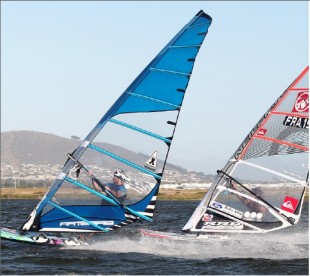 It’s all about the start
It’s all about the start
It is essential to hit the start-line at full speed, bang on time. One second too early will lead to disqualification; a couple of seconds too late and you are playing catch-up for the rest of the race, and possibly out of the running to advance. Timing is everything.
Ross: “By the time my heat is in sequence I know where I am going to start, and my route around the course. When the four-minute flag is raised I will sail for about one minute away from the start line to the first buoy, then back again so that I cross the start line the wrong way on two minutes to go, this way I can check if my timing is off with the race crew too. As the final minute comes I will gybe and head straight for where I am going to start on the line. And at about ten seconds to go I will fully sheet in and try to hit the line going full speed.”
Antoine: “Everybody does the same thing for the timing, so it is pretty straightforward. During the last seconds, I’m always watching my stopwatch on my arm, but at the same time what all the other guys are trying to do and where they are. I’m also counting down in my head the last 5 seconds.”
Lena: “I will try doing a few starts just to get used to the start line and see where is more advantaged, boat or pin. At the boat end you have the cleanest wind, and in light winds people often prefer the boat end. But, starting from the pin end the distance to the mark is sometimes smaller, so this can also be an advantage. I prefer starting from the pin, as I find it easier to time myself when I have the pin to look at. I don’t usually do as well starting in the middle as I do when starting from pin or boat.”
Hennie: “One side of the line is usually biased in some way. Most courses are set up so that the pin end is slightly to windward of square to the wind, so that the committee boat can see the whole start line. Try to figure this out early, and go for that end, but it is always more important to be in clear air.”
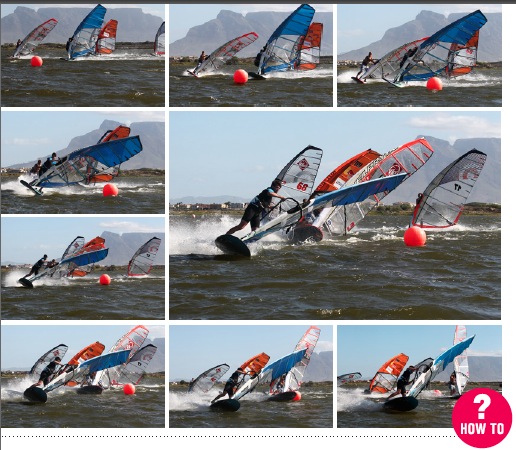 Around the cans
Around the cans
You have made it across the line, and are now approaching the first buoy at 30 knots, with a pack of other sailors right up your board-shorts, or in front and throwing up death-chop. Now is not the time to fall in, but if you think that, you probably will. Gybing under pressure is one of the key elements that will make or break your race, and is also the best opportunity to overtake.
Ross: If I arrive to the first gybe mark in first, I try to do a nice fast gybe so I can get in, out, and then away from the rest of the pack. I will try and defend my space from sailors trying to dive inside of me, by cutting off any space they think they can gybe into. Having already sailed the course, I will know if it’s best to do a tight gybe or a slightly wider one.
Sometimes it will pay to slow down and gybe not at full speed. This way you will be able to change your gybe and avoid trouble or defend yourself. When I am not leading into the first gybe, I am looking ahead for space to gybe into and come out clean with speed. If you had a bad start, you can make up a lot of places with a good gybe at the first mark, so push hard, be aware of the other sailors around you and look for clean wind and space.
Antoine: “If you refer to the first mark, it is really easy as you have no wake if there is no-one in front of you, so you can actually make your gybe where you want. [More likely to happen if you are Antoine! -Ed] Then try after the gybe to stay fast, and escape as soon as you can. But, if you are in top three or four, every gybe is never the same scenario. You always have to make he decision at the last moment, and it’s always the most experienced guy that will make the difference. The guy in front of you can fall in the water and take you down too. It’s all very fast. For me, everybody has a certain style to gybe, and as soon as you follow one guy you know approximately what he is going to do, so it can change. It is not the same every time, but you will know quite quickly if the guy is going to gybe well or not, and always be ready to take advantage of a mistake as soon as it happens.”
Mitch: “Firstly, try to stay calm, this gives you the best focus to enter and exit the gybe with speed and precision. Then, check the position of racers entry into the gybe marks. If they gybe low, it gives you the opportunity to gybe really tight at the gybe mark and cut on the inside for the clean wind and steal their wind. If you are behind, try to cut straight across their wake rather than get stuck riding in it.”
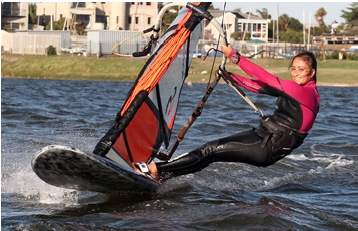 Lena: “How you decide to jibe will depend on many things, wind and water conditions, (if there are waves you need to take them into consideration as well) Knowing your opponents helps when deciding whether to go tight or wide.”
Lena: “How you decide to jibe will depend on many things, wind and water conditions, (if there are waves you need to take them into consideration as well) Knowing your opponents helps when deciding whether to go tight or wide.”
Robbie: “Gybing for me is very psychological and mind games play a very big role. A few weeks back I was racing with another PWA pro who kept on shouting and screaming as he rounded the mark with me. Inevitably, it really threw my rhythm and confidence, and taught me that the only way I was going to improve was to constantly sail in a pack so that these silly things did not worry me.”
Hennie: “Stay calm by telling yourself as you come up to the gybe that: ‘This is going to be a easy and perfect gybe’. Don’t start saying ‘Don’t fall, don’t fall’, because then you will. If you are in the pack, back off slightly and try to be very tight on the mark when you gybe. The water is going to be all messed up and choppy at that point, probably with a couple of guys down, so take it easy, make your gybe and then put the hammer down and pass some people.”
Stay tuned for the second installment where we will cover the rest of the race, plus don’t forget to check out the live stream too!

